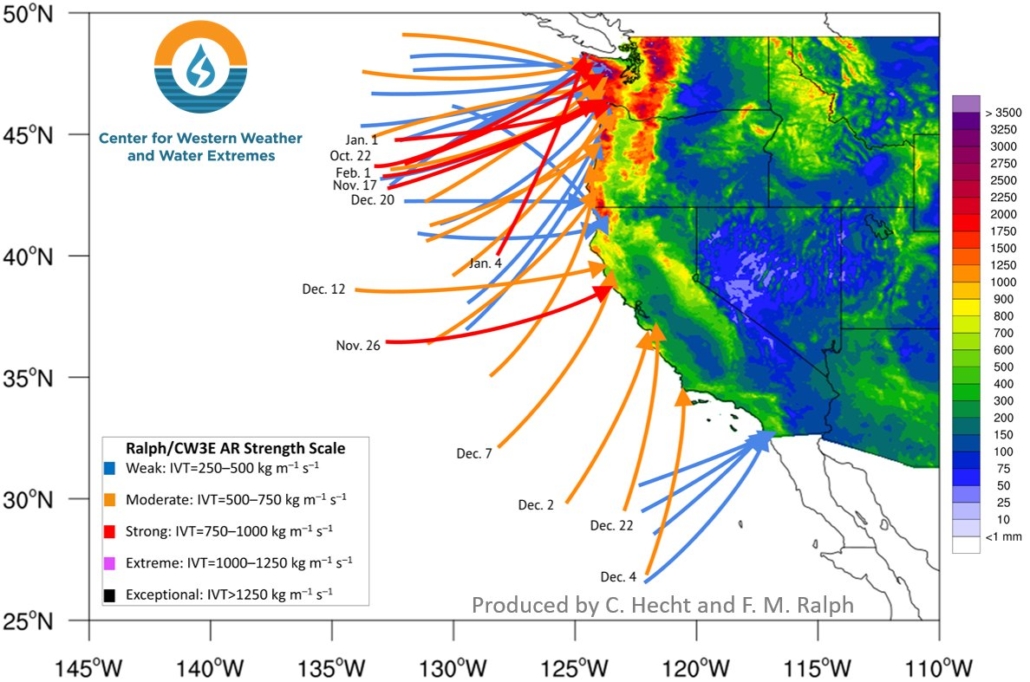Forty Atmospheric Rivers Have Hit West Coast Since October
More than three dozen atmospheric rivers made landfall on the West Coast from fall through early spring, but a lack of strong events in California led to the development of drought conditions in parts of the state.
An atmospheric river is a thin, but long plume of moisture in the atmosphere that stretches from the Pacific Ocean tropics or subtropics into higher latitudes. They provide a boost to the rain and snow totals produced by storm systems taking aim at the West Coast, mostly from late fall into early spring. Although these events can bring hazardous impacts, they are also beneficial since they help replenish the water supply in the West.

The Center for Western Weather and Water Extremes at Scripps Institution of Oceanography studies atmospheric rivers and other extreme weather. Graphic: CW3E Scripps/UC San Diego



